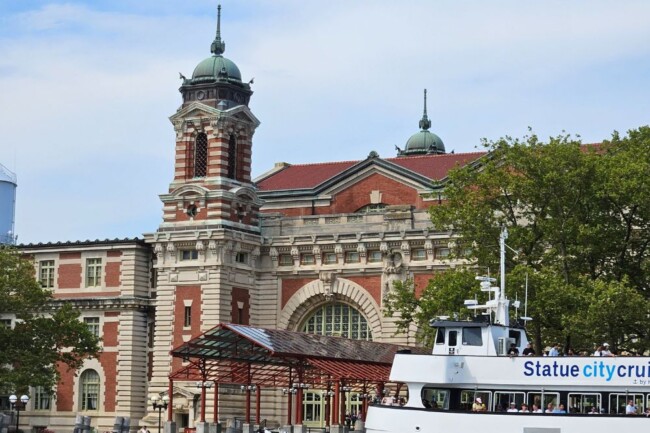Nestled on the unexplored south side of Ellis Island, next to the Ellis Island Immigrant Museum, lies a true hidden gem: 29 buildings that make up Ellis Island’s Immigrant Hospital Complex. These structures operated from 1902 to 1951 to address the medical issues of arriving immigrants during the height of migration into the United States and to handle the requirements of the new federal immigration laws. Save Ellis Island, founded in 1999, is a non-profit organization and partner of the National Park Services with the goal of rehabilitating the 29 unrestored buildings that make up Ellis Island Immigrant Hospital. Keep reading more about this organization and its mission.
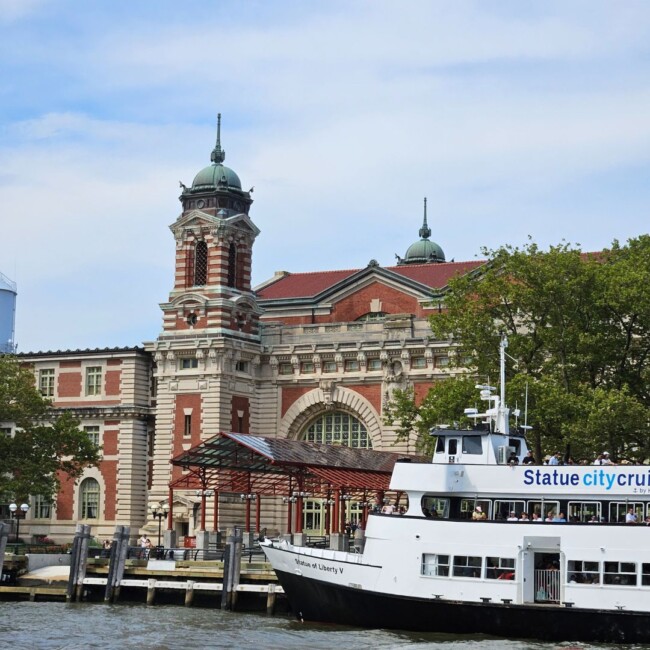
History of Ellis Island
Millions of immigrants have migrated to the United States, hoping for a brighter future. After the Civil War, the number of immigrants entering the United States increased dramatically between 1870-1900. New York was the largest port of arrival for aliens seeking new lives in the United States, with more than 70% of all immigrants entering through New York City. The primary immigration processing center was initially called Gastle Garden, also known as the Castle Clinton National Monument, located on the southern tip of Manhattan. Castle Garden processed over 8 million immigrants between 1855 through 1890 when it closed.
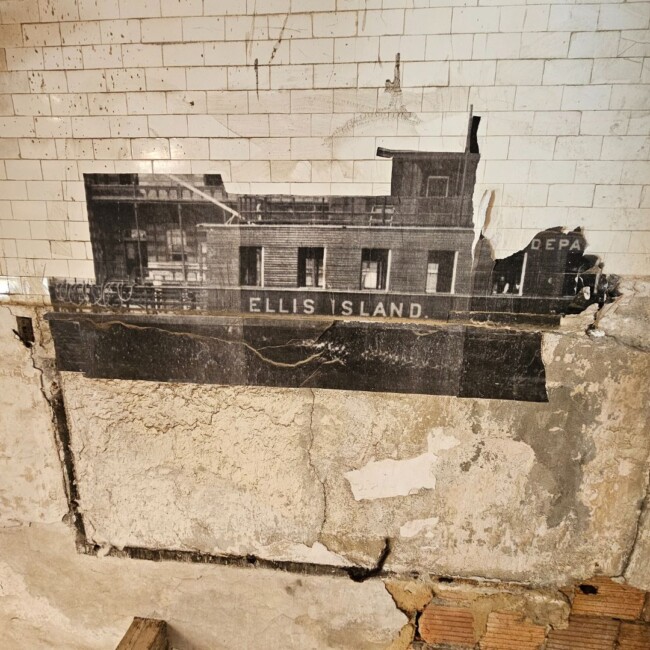
Due to the rising influx of immigrants, the federal government decided to build a new immigration facility in 1892 named Ellis Island, and it opened on January 1st, 1892. A teenage girl from Ireland, Annie Moore, accompanied by her two younger brothers, became the first immigrant to come through Ellis Island. The initial immigration facility was a large wooden building made from reused parts of an old military installation called Fort Gibson. This building burned down in 1897 and was replaced in 1900 by the current immigration buildings. More than 12 million immigrants would arrive in the United States via Ellis Island over the next 62 years.
Read More: The History of New Jersey’s Piney Culture
Ellis Island Hospital Complexes
In the early 1900s, immigration officials thought the peak wave of immigration had passed. Still, immigration was on the rise, and in 1907, more people immigrated to the United States than any other year, and it remained the highest immigration year for the next 80 years. Ellis Island processed around 1.25 million immigrants that year, and new facilities were constructed as a result, including hospital buildings, dormitories, and contagious disease wards to accommodate the population.
Most immigrants entering the United States arrived through Ellis Island, although other ports of entry existed in cities such as Philadelphia, Boston, Baltimore, San Francisco, and New Orleans. First and second-class passengers arriving in New York Harbor received health inspections aboard the ship and were not required to undergo the customary inspection progress at Ellis Island. People who could afford a first or second-class ticket were considered wealthy and less likely to become a public charge for medical or legal reasons. Third-class passengers often traveled in unsanitary and crowded conditions at the bottom of the ships and were referred to as “steerage.” Steerage passengers were required to undergo a detailed inspection. Sick passengers and those with legal problems were all sent to Ellis Island for a thorough examination, regardless of class.
Both the General Hospital and Contagious Disease Hospital on Ellis Island were built to handle the requirements of these immigration laws and address medical issues of arriving aliens during the early 20th century. The Public Health Service (or United States Marine Hospital Service) provided all medical treatment and personnel for the hospital complex. That organization continued to treat immigrants through the early 1920s. Following World War I, United States immigration policies abruptly changed, drastically decreasing the number of immigrants allowed to enter the country. As the number of immigrants declined, the Public Health Service returned to its founding mission of 1798 to provide medical care for US government employees involved in maritime service and America’s merchant seaman. The hospital complex was in operation from 1902 to 1951 and treated 454,026 patients, both immigrants and beneficiaries. There were also 424 births and 5,435 total deaths, and no one was ever buried on the island.
Save Ellis Island
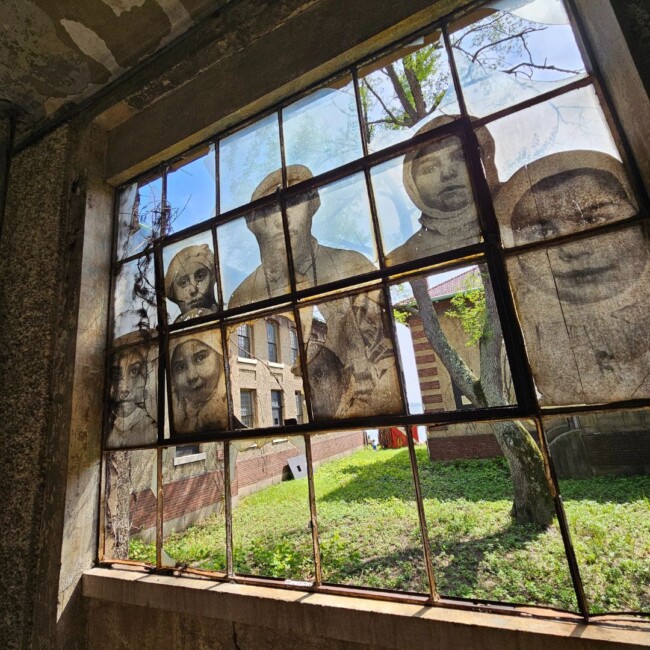
In 1990, The Supreme Court awarded Ellis Island’s 27.5 acres to New Jersey. Then-Governor Christine Todd Whitman formed the Elli Island Re-Use Advisory Committee which was responsible for examining options to maintain and restore the structures on Ellis Island. From here, the non-profit Save Ellis Island was formed. Its mission was to raise funds to execute the restoration and rehabilitation of the 29 historic Ellis Island buildings. Over the years, Save Ellis Island has raised over $75 million and stabilized some of these buildings. The Hoboken Girl got an exclusive in-person 90-minute Hard Hat Tour to learn more about the past of Ellis Island and its iconic history. These incredible tours are the best way to learn more details about the history of the buildings and the untold stories behind the doors.
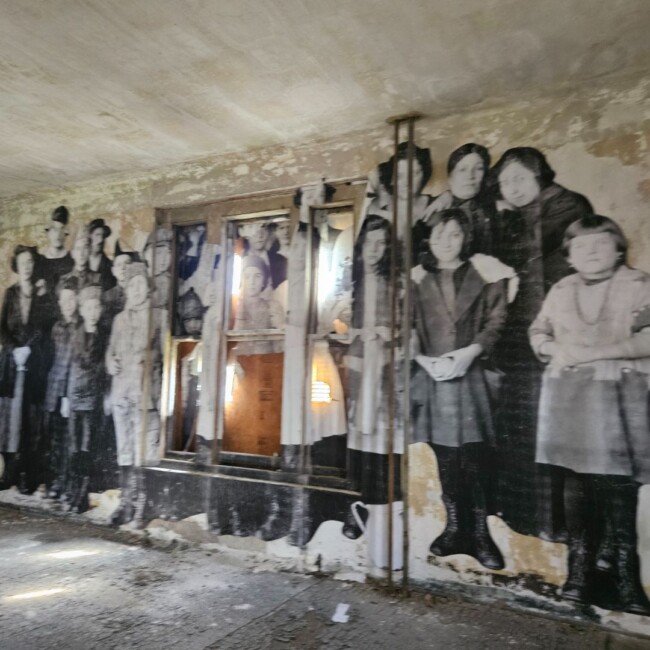
The Ellis Island hospital complexes were built on two newly constructed islands installed by landfill and explicitly created for the hospitals. The hospitals include a General Hospital that opened in stages and consists of three buildings, two attached outbuildings, a Surgeon’s Cottage, and a Contagious Disease Hospital consisting of 17 independent structures. The General Hospital had a capacity of 300 beds, while the Contagious Disease Hospital had a total of 450 beds. In 1934, the Ellis Island Commission was asked to assess the use of these facilities and concluded that outdoor space was necessary to provide fresh air and sunlight, which was considered a remedy for many diseases at the time because of patients afflicted with tuberculosis with long-term illnesses. As a result, the space between the islands was filled in and landscaped, and a shelter was built to protect patients from rain and snow. A new recreation building was built in 1936 that included an auditorium, gymnasium, and a film projection booth with a stage to address the additional needs of patients. Around this time, several wards were renovated.
See More: A List of Historical Places to Visit in North Jersey
In 2014, Save Ellis Island commissioned French artist JR to install an exhibit called Unframed which is an immersive collection of two dozen images on windows and walls of the hospital. This collection is comprised of enlarged photos of immigrants from Ellis Island’s historical archives and is designed to transport tourists back in time and to walk where their ancestors did. Save Ellis Island also sponsors educational programs such as class trips and events.
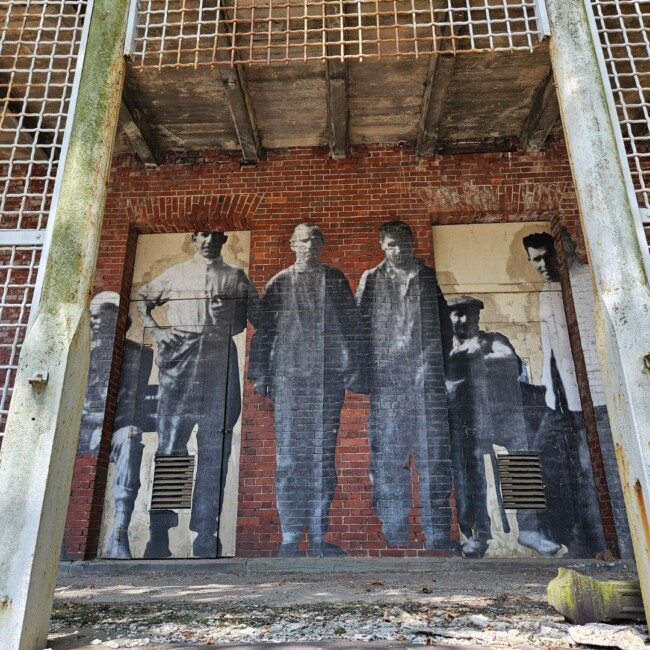
Over 150,000 in-person Hard Hat Tours and educational programs have occurred on the island since 2005. These incredible tours and programs help support SEI’s efforts, learn about the past, and educate the public about their restoration work. Visitors can join docents as they lead guests back in time through the unrestored historic hospitals to learn more about Ellis Island’s hospital complex.

